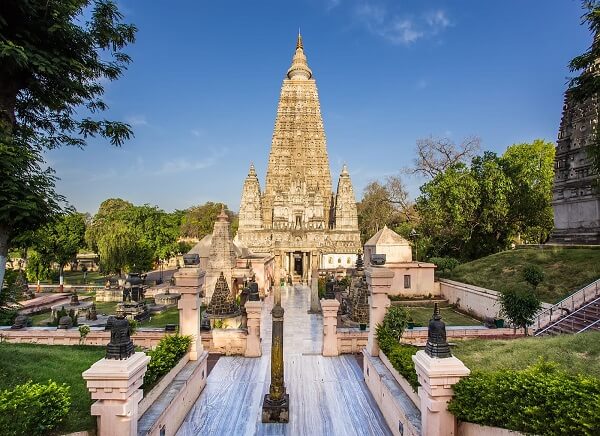Because of its rich historical importance, the Bodhi Tree, located 100 kilometers south of Patna in the north Indian state of Bihar, is possibly the most important and recognized sacred location in Buddhism. Prince Siddhartha Gautama, the spiritual teacher who subsequently became known as the Buddha, acquired enlightenment under this tree. Prince Siddhartha is said to have sat and meditated for seven days under this tree. Later, on the location where he sat, a shrine called as Animisalocana Cetiya was built. In the 7th century, a modest temple was erected near the Bodhi tree.
The Bodhi tree is one of the four important Buddhist pilgrimage sites, and it is a popular tourist attraction. In reality, the Anandabodhi tree in Sravasti and the Bodhi tree in Anuradhapura, both of which are key locations at Buddhist history, are said to have been propagated from this tree in Bodh Gaya. Since the Buddha's time, the aura of the Bodhi tree and the temple complex in which it is located has drawn sages, meditators, and yogis to it. Buddhajnana, Padmasambhava, Vimalamitra, Nagarjuna and Atisha are just a few of the great spiritual leaders who have lived and pondered underneath the historically and spiritually significant Bodhi Tree. Bodh Gaya is also known for the Mahabodhi Temple Complex, which is located right next to the tree and is a UNESCO World Heritage Site. This area is very intriguing to religious folks as well as historical buffs.
History of Boddhi Tree
If historical records are to be trusted, Siddhartha Gautama recognized the miseries that existed in the world and desired to be free of them in the early fourth century. As a result, he sought out spiritual instructors, enquired about their expertise and practiced different yoga asanas and meditation; but, all of his efforts were in vain, since he was unable to accomplish his ultimate aim of enlightenment.
Finally, the prince set off towards the ancient forests of Uruvela, which is today's Gaya in North India, guided by visions and following in the footsteps of past Buddhas. Siddhartha sat underneath the tree and prayed to the Earth, asking it to witness his many lives of goodness that had brought him to this point of enlightenment. He promised himself that he would not rise again until he had gained enlightenment. After several days and nights, the prince was ultimately transformed into the Buddha, or 'Enlightened One'.
The Mahabodhi Temple's Development Around the Bodhi Tree
Emperor Ashoka built a temple and monastery on the place where the prince had sat to acquire enlightenment in approximately 250 BC, around 250 years after the Buddha acquired enlightenment. The Animeshlocha Stupa, or Unblinking Stupa, is in the northeast corner of the temple complex, marking the site where the Buddha stood.
Legend has it that the Buddha went between the Stupa and the Bodhi tree frequently, and lotus flowers bloomed along the path. The Ratnachakarma, or Jewel Walk, is the name given to this walkway. The current Mahabodhi temple succeeded King Ashoka's temple in the 2nd century AD, and was later remodeled in AD 450, 1079, and 1157, before being totally renovated by Burmese Buddhists in 1882.
Prayer Beads Associated with Bodhi Tree
The fact that prayer beads are made from the seeds of the Bodhi tree is a unique aspect of this location. Because of the rich history and religious significance associated with this towering oak, pilgrims see this act as sacrosanct. This practice allows you to draw near to the Buddha and experience his enlightenment. Devotees believe that through participating in the bead manufacturing process, they are gaining access to the Buddha's ideals and thoughts.
The Bodhi Day Celebrations
Every year on December 8, the Bodhi Day is commemorated with zest and enthusiasm at this location. The entire day is dedicated to the Buddha, and people from all across the country gather under the sacred tree to commemorate Buddha's enlightenment. Buddhists and Dharma followers go to this location on a regular basis, greeting each other with "Budu Saranai!" which translates to "may the Buddha's peace be yours" in English.
Best Time to Visit Boddhi Tree
The finest months to visit this location are October to March, and many people from all over the world come to participate in the many Buddhist and spiritual programs held during these months. If you want to visit Bodh Gaya during this period, you should bring light clothing as well as woollen clothing.
Despite the fact that the summer months of March to June are hot and humid, pilgrims throng to this location to commemorate Buddha Jayanti at this period. So, if you are a pious person, paying a visit to the site over the summer might be worthwhile.








 +91-7303039611
+91-7303039611